
Section E New Testament
Chapter 48 - Archaeology on the Ophel (Jerusalem Archaeological Park)
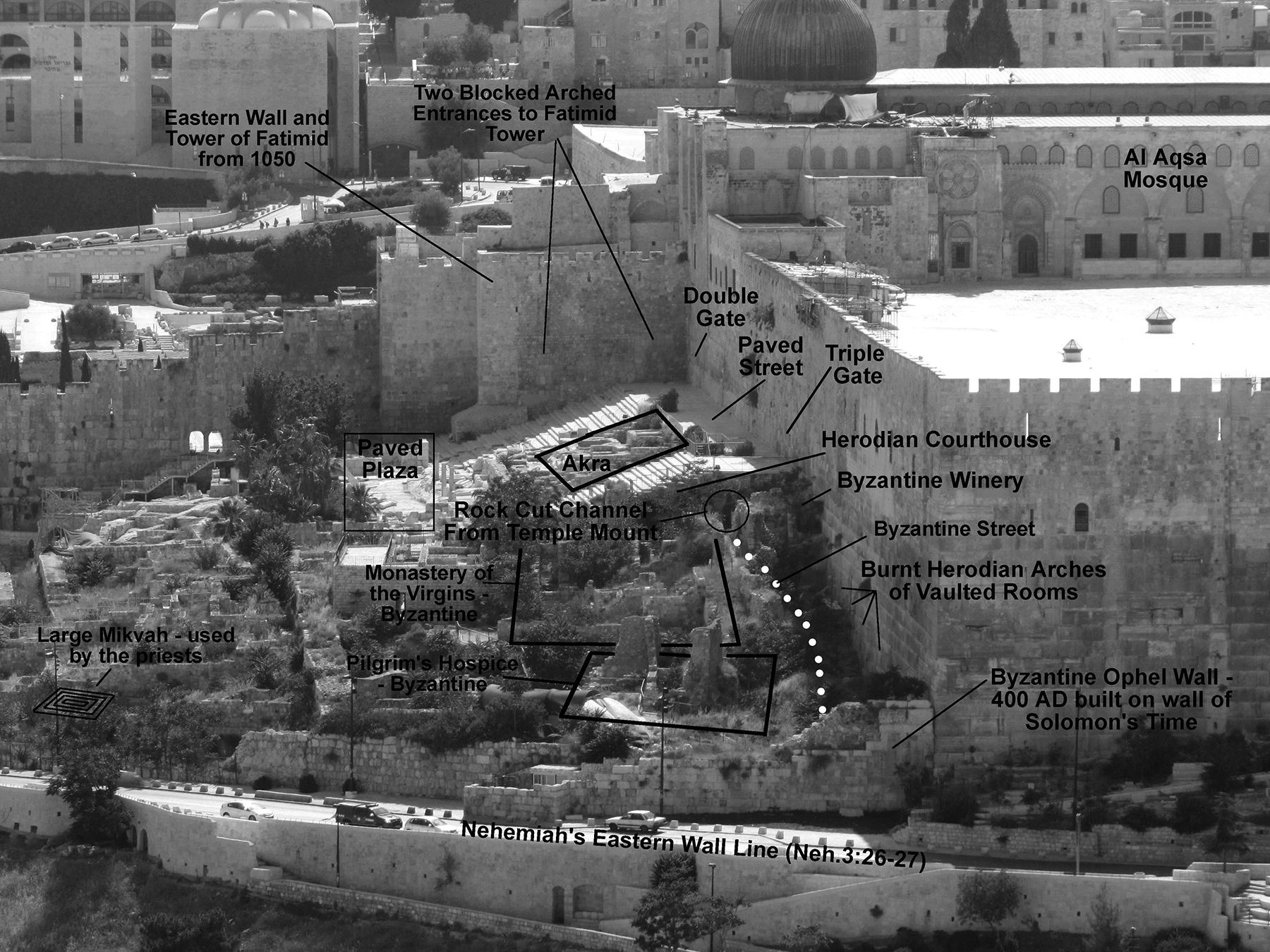
A channel cut in the rock (dotted white line in photo above) took water from a large cistern on the Temple Mount to the ritual baths below the Double and Triple Gates. It runs under the Double Gate stairs and then turns east under the stairs of the Triple Gate.
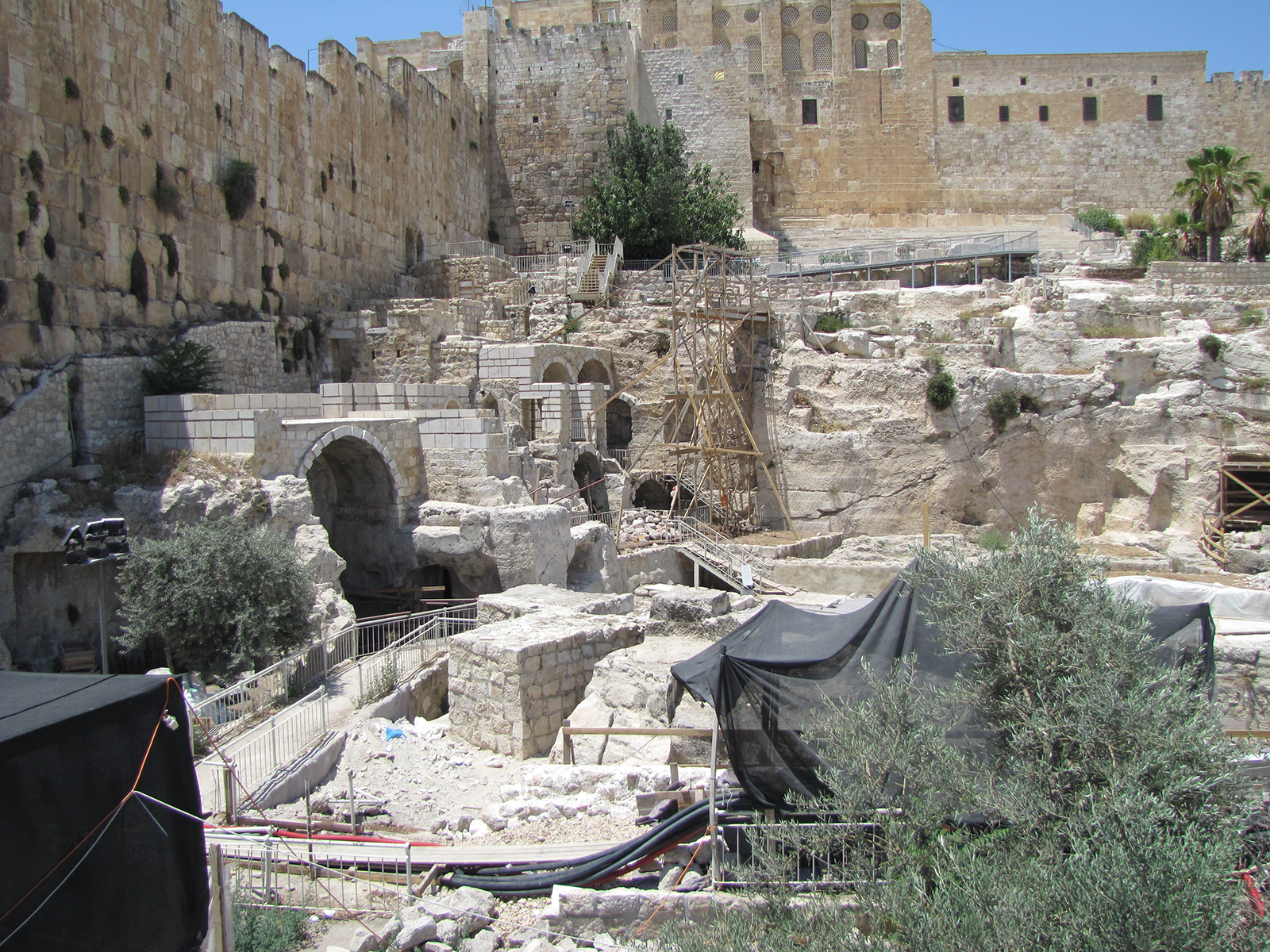
Overlooking the Ophel where heavy excavation south of the Temple Mount began in 1967 and continues today. The Double Gate and the large stairs are in the middle of the photo and to the right side in the background.
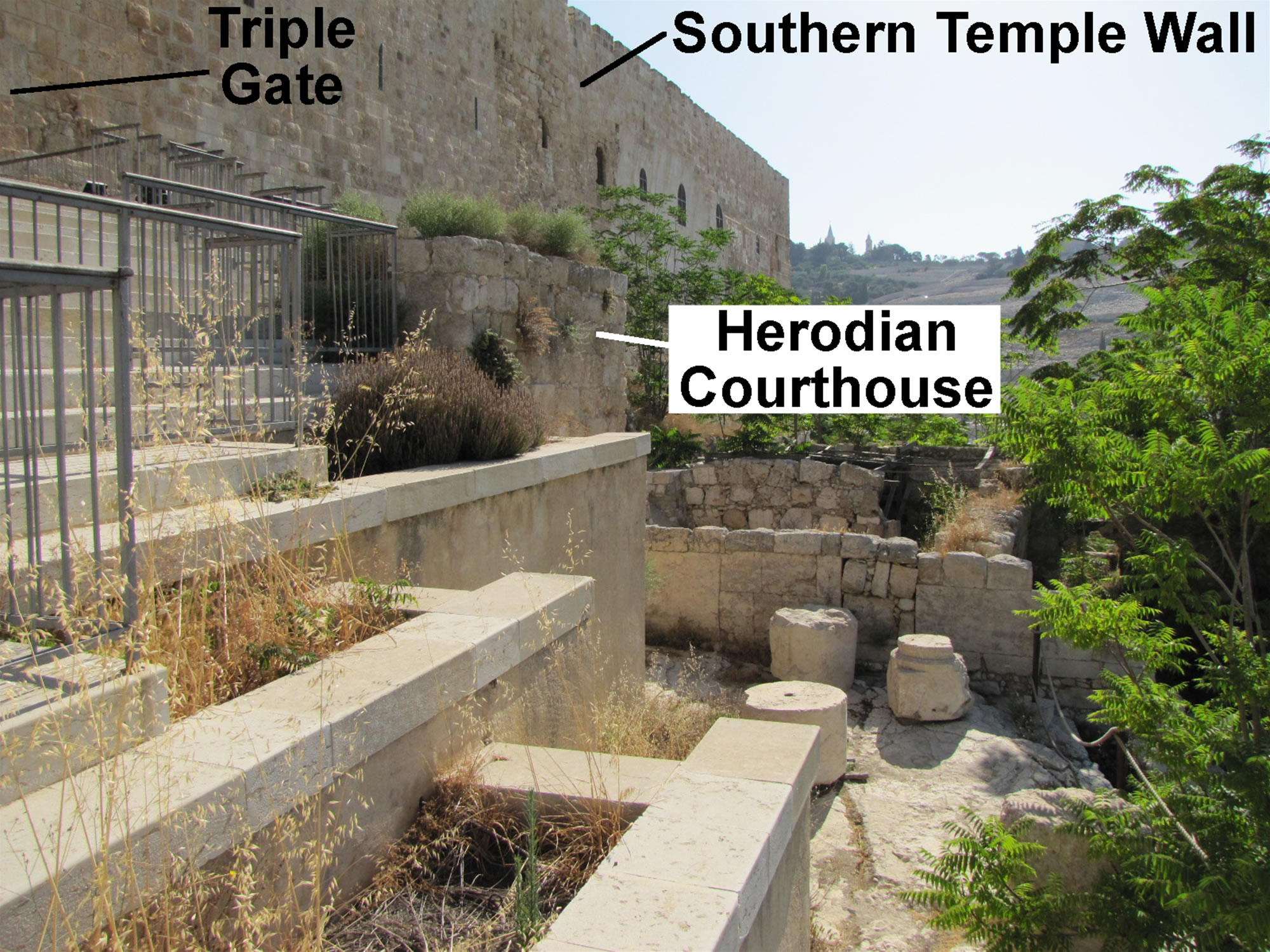
This photo is looking east toward the Kidron Valley and the Mount of Olives along the southern wall of the Temple Mount. The walls of a large Herodian building were found east of the Triple Gate. The Mishnah mentions a courthouse that “used to sit at the entrance to the Temple Mount.” Fragments of a finely carved stone inscription were found in this location that says “the elders.” This is assumed to refer to the elders of the Sanhedrin who managed and met in this courthouse. Two other courthouses were also mentioned in the Mishnah: one on the Temple Mount, and one in the “Hall of Hewn Stones.”
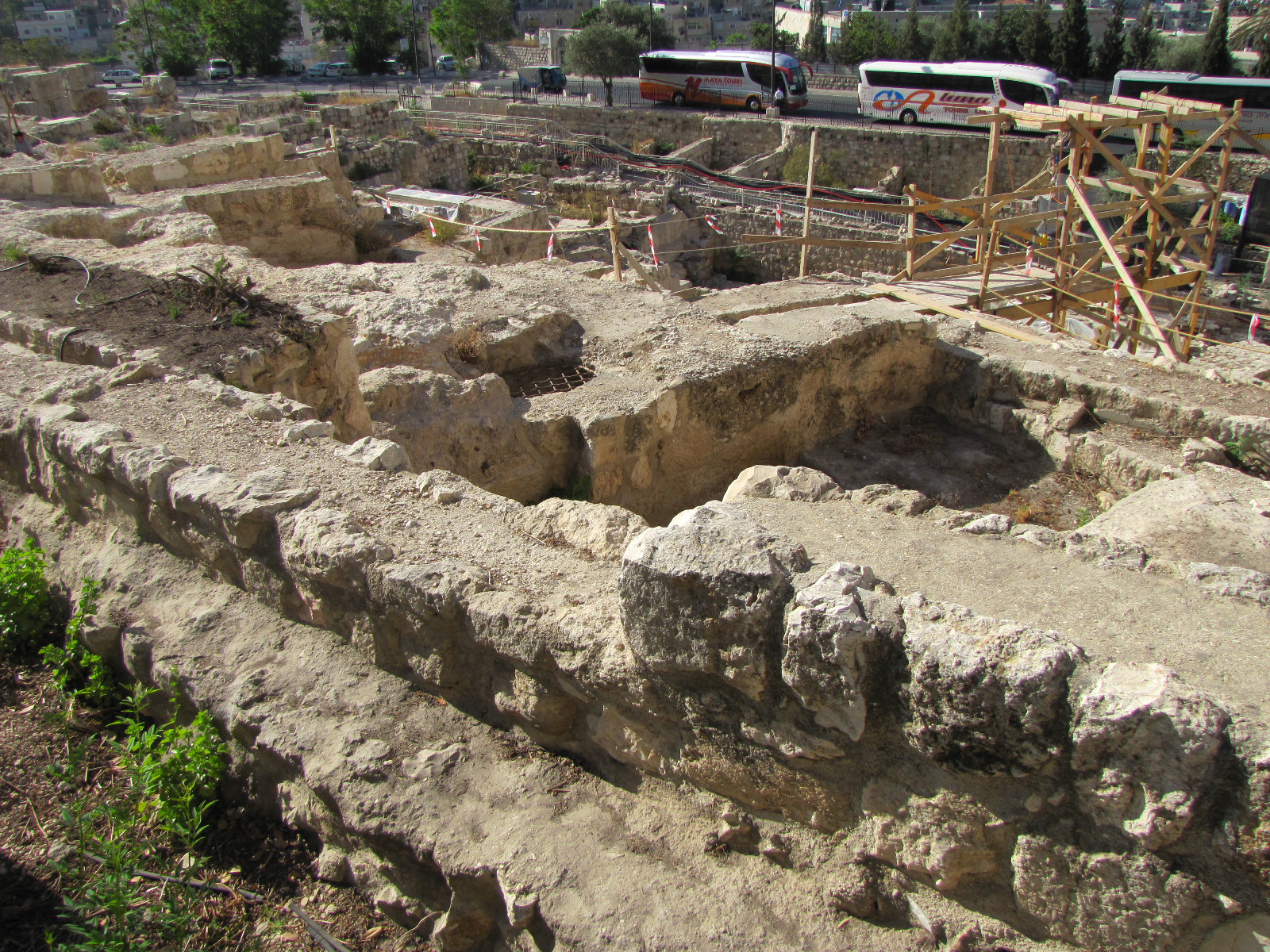
Looking south over the Archaeological Park and excavation south of the Temple Mount.
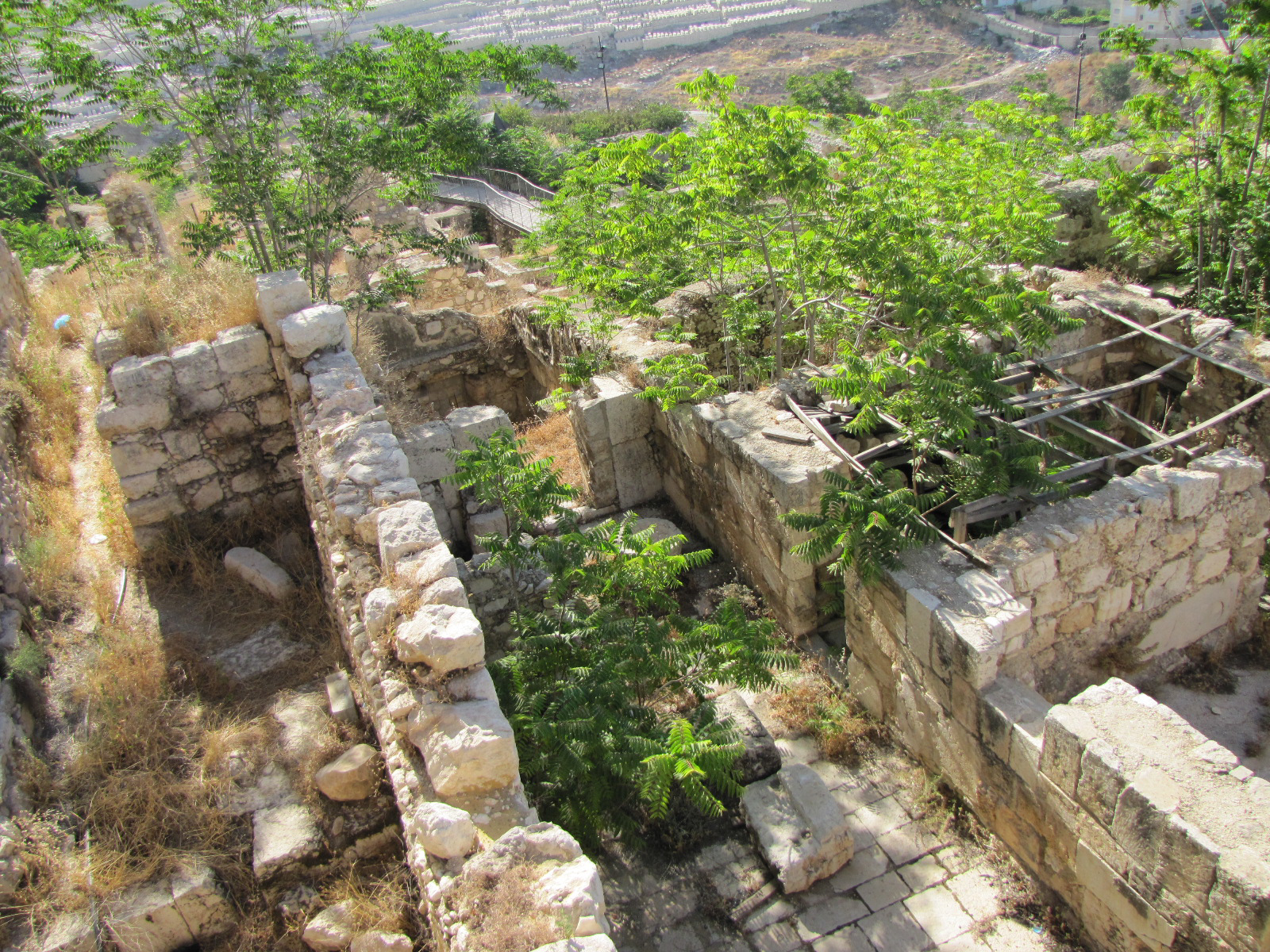
Excavated remains south of the Temple Mount looking east/southeast.
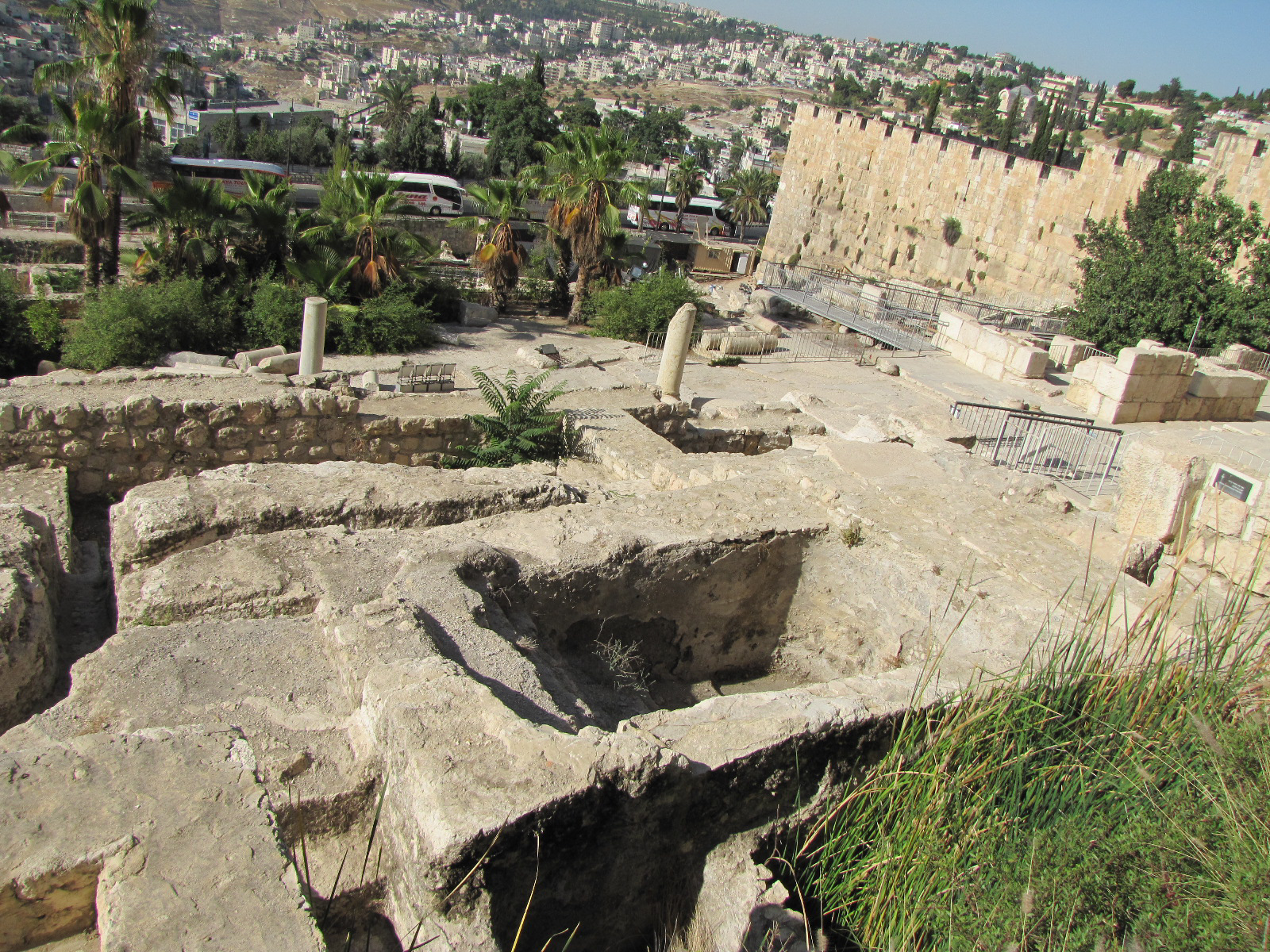
Excavated remains south of the Temple Mount looking southwest from near the Triple Gate.
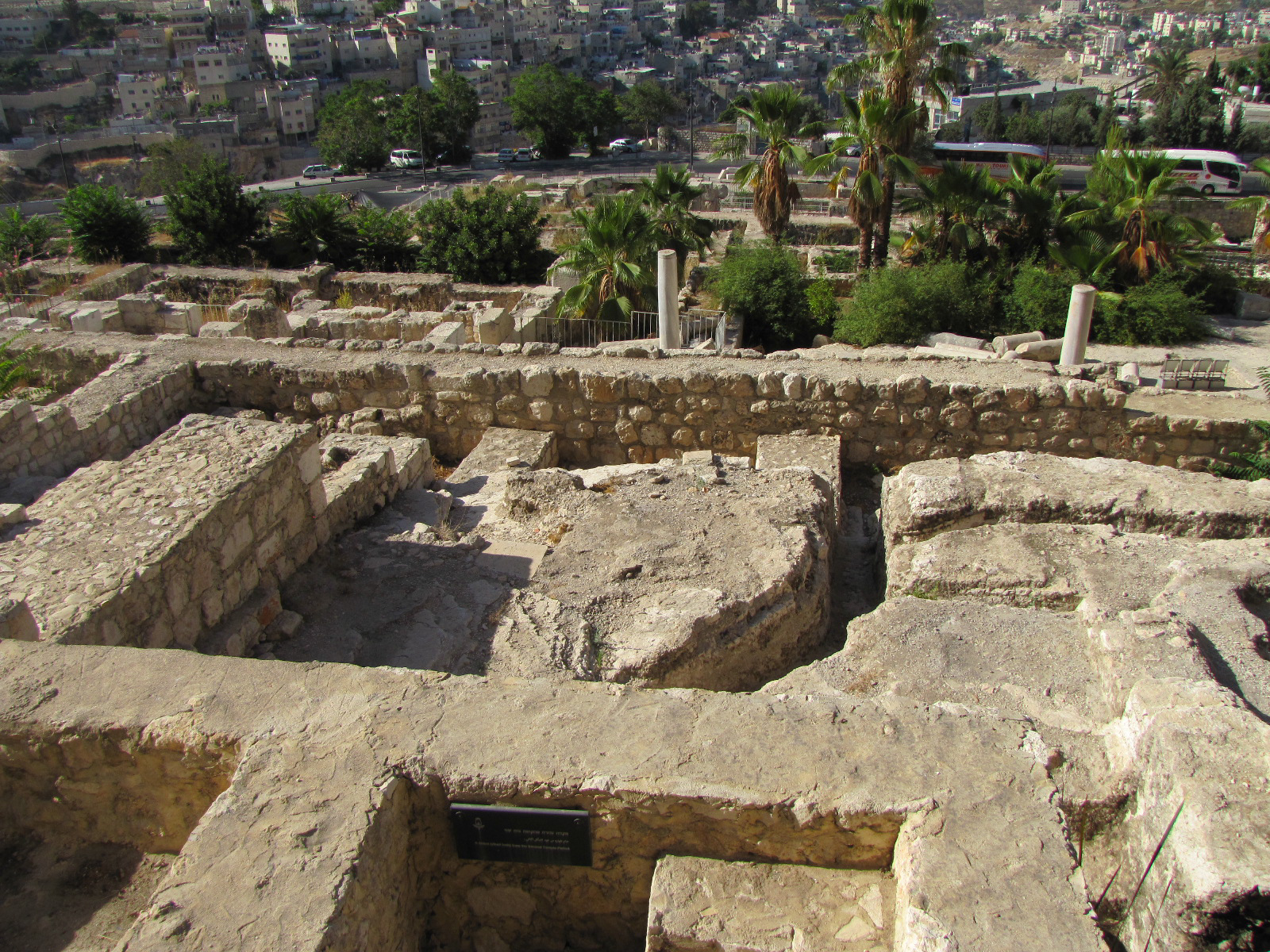
Mikvah by the stairs south of the Temple. Looking south from near the Triple Gate.
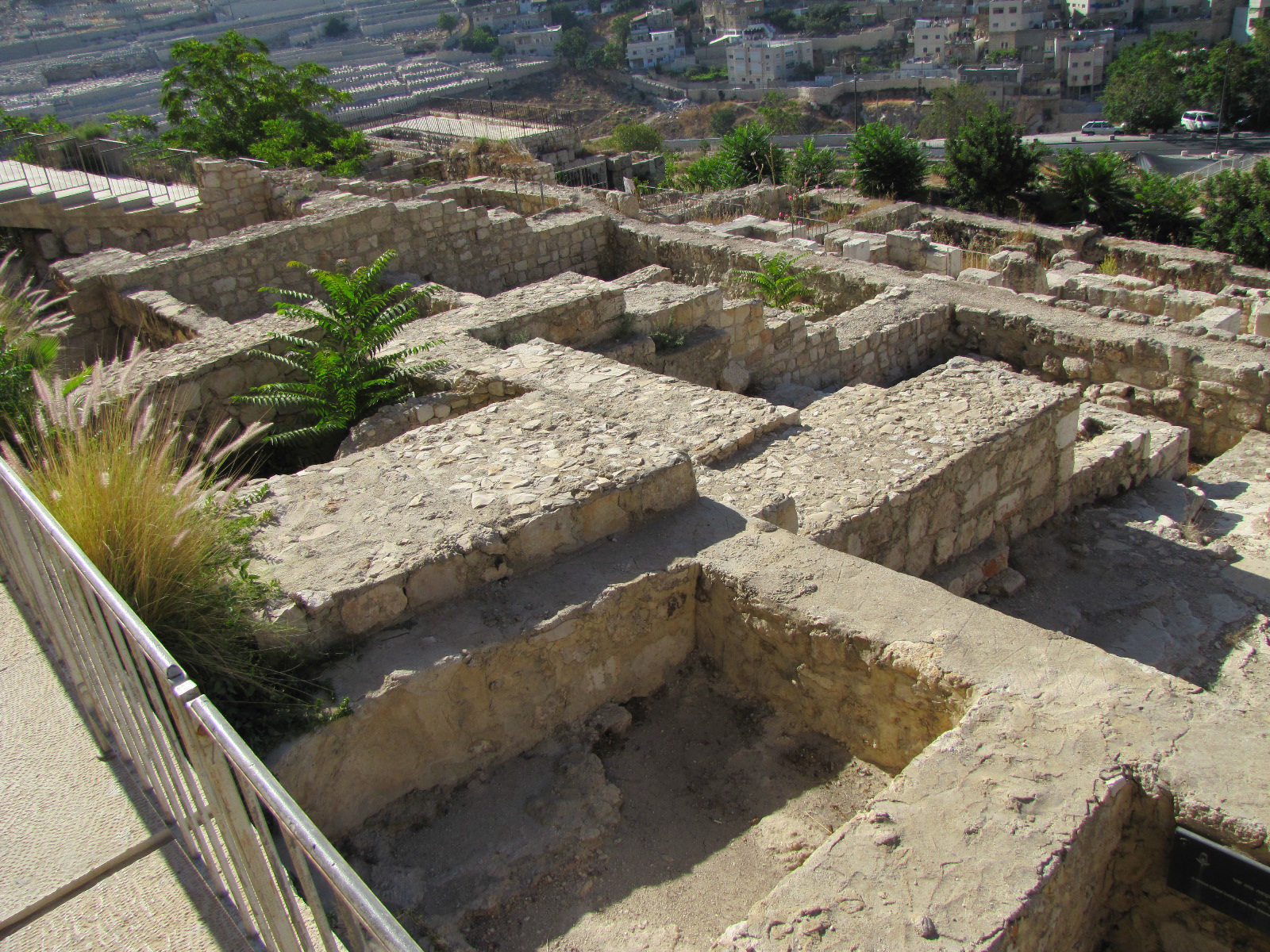
A portion of the remains of the Seleucid Akra, which overlooked the Temple Mount during the days of the Macabbean Revolt. The Macabbees tore it down and built a southern extension of the Temple Mount over the northern portion of this structure. The Triple Gate stairs can be seen in the top left of this photo.
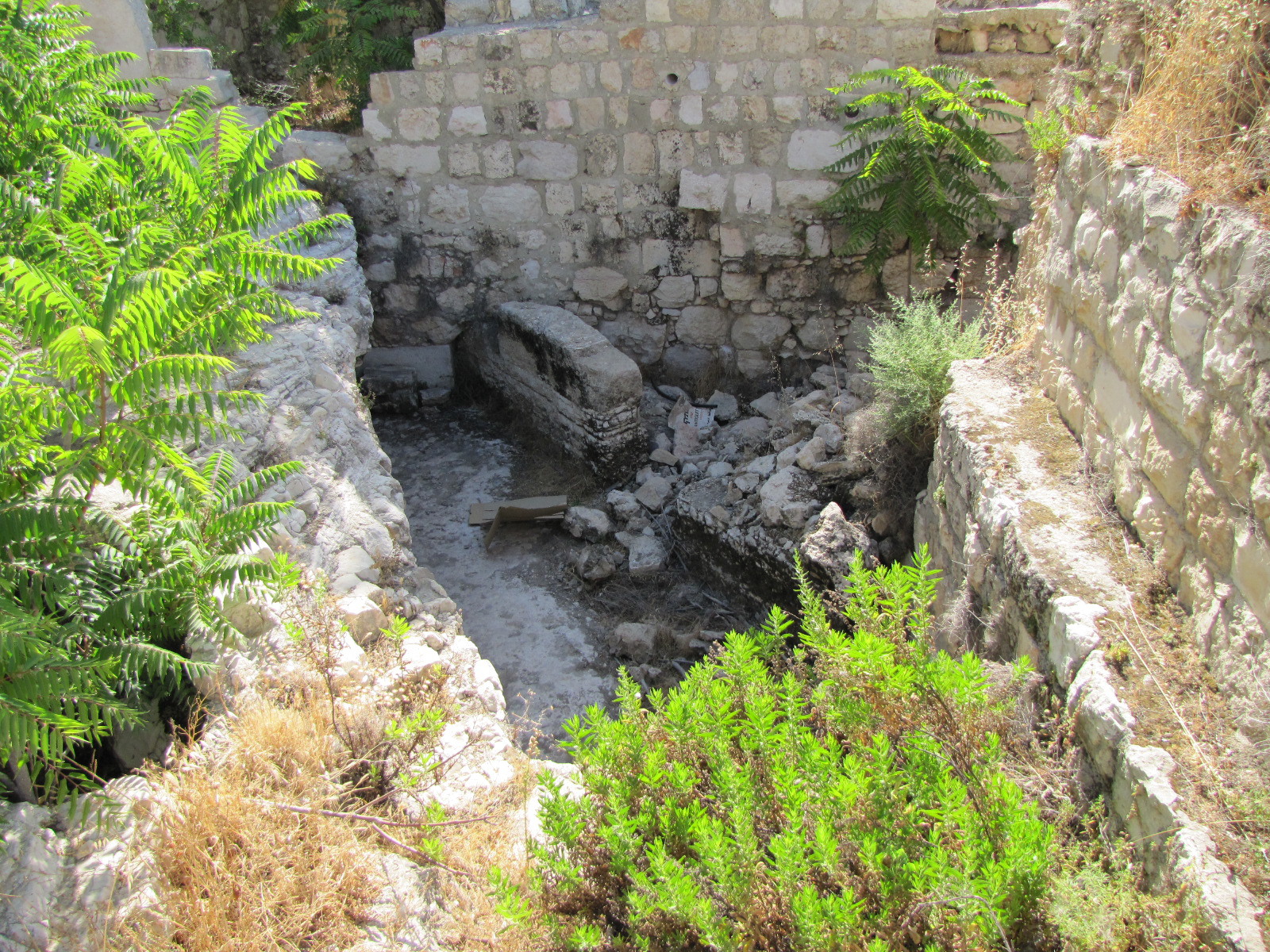
Excavation south of the Temple Mount on the Ophel.
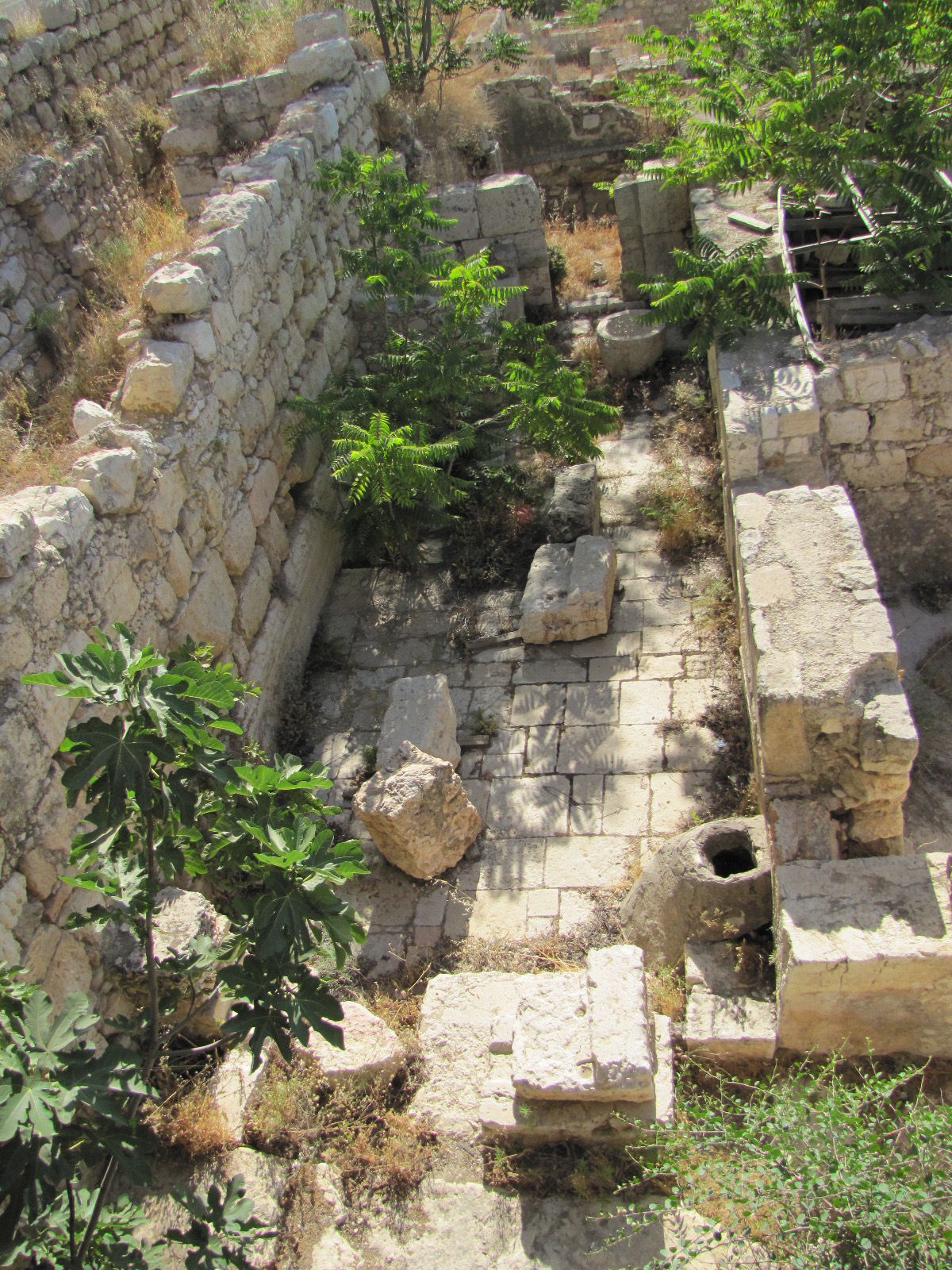
Excavation south of the Temple Mount on the Ophel.
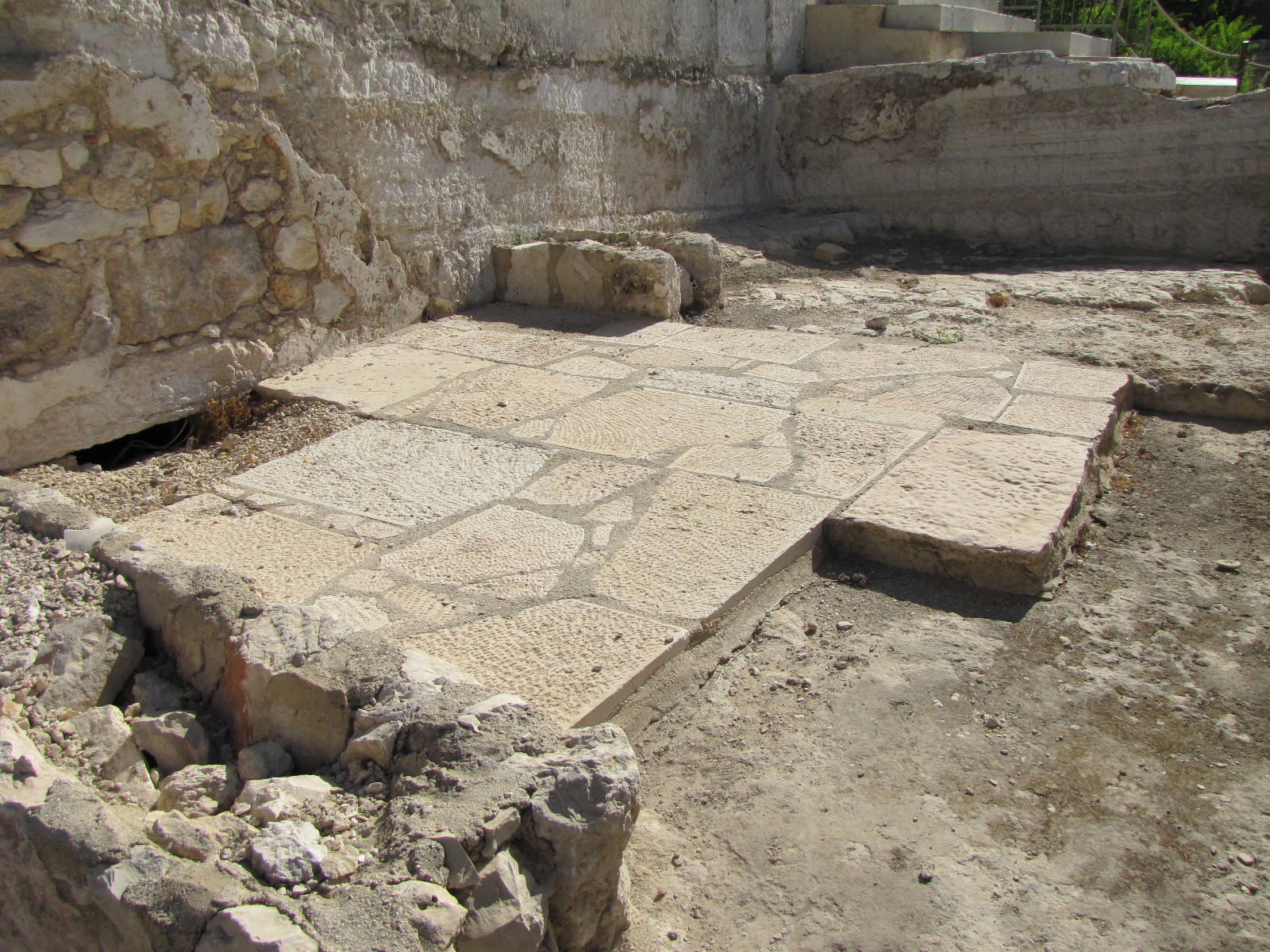
Pavement (or floor) among the ruins.
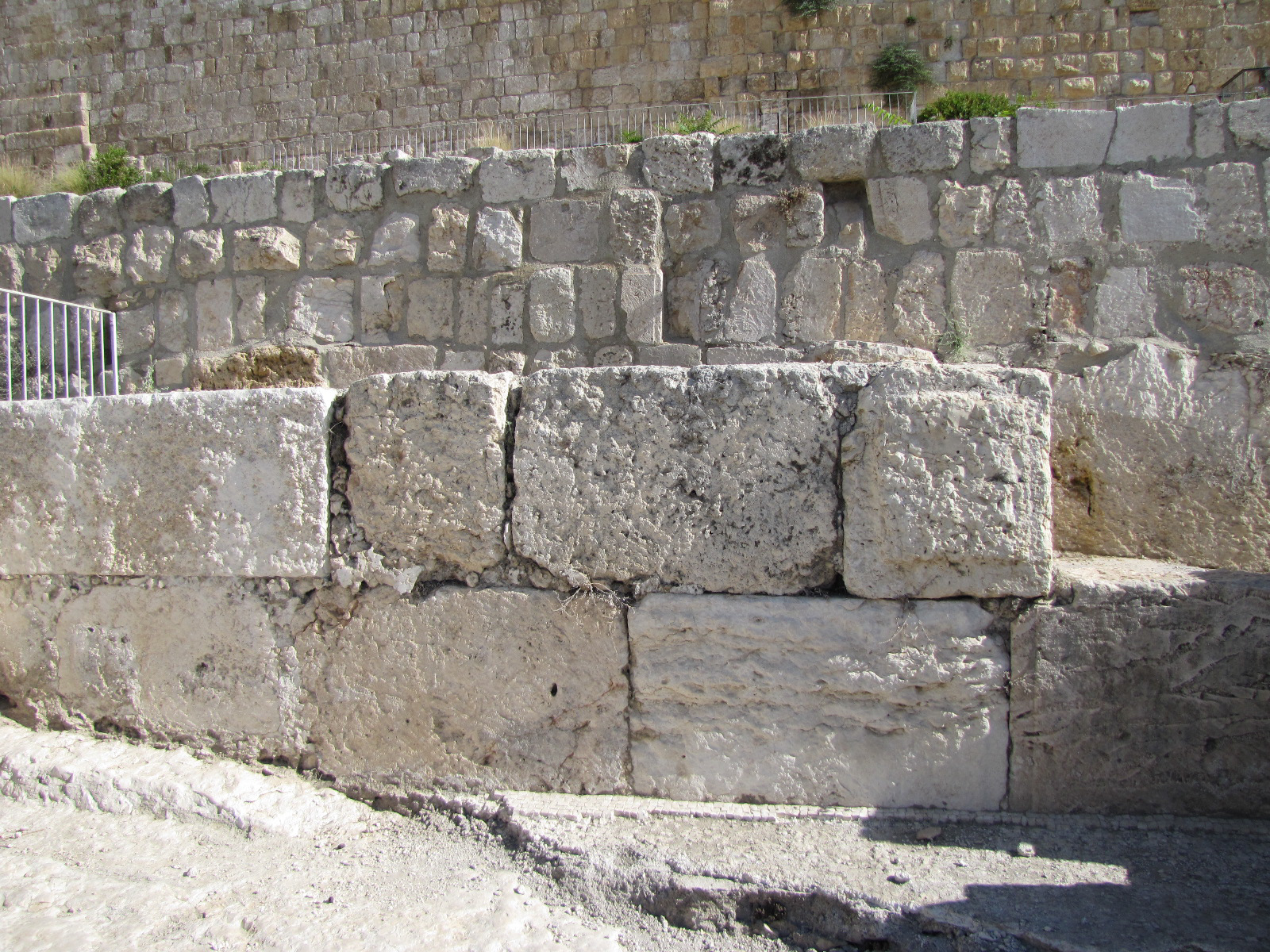
Three different walls can be distinguished as we look up the Ophel toward the southern Temple Mount wall in the back.
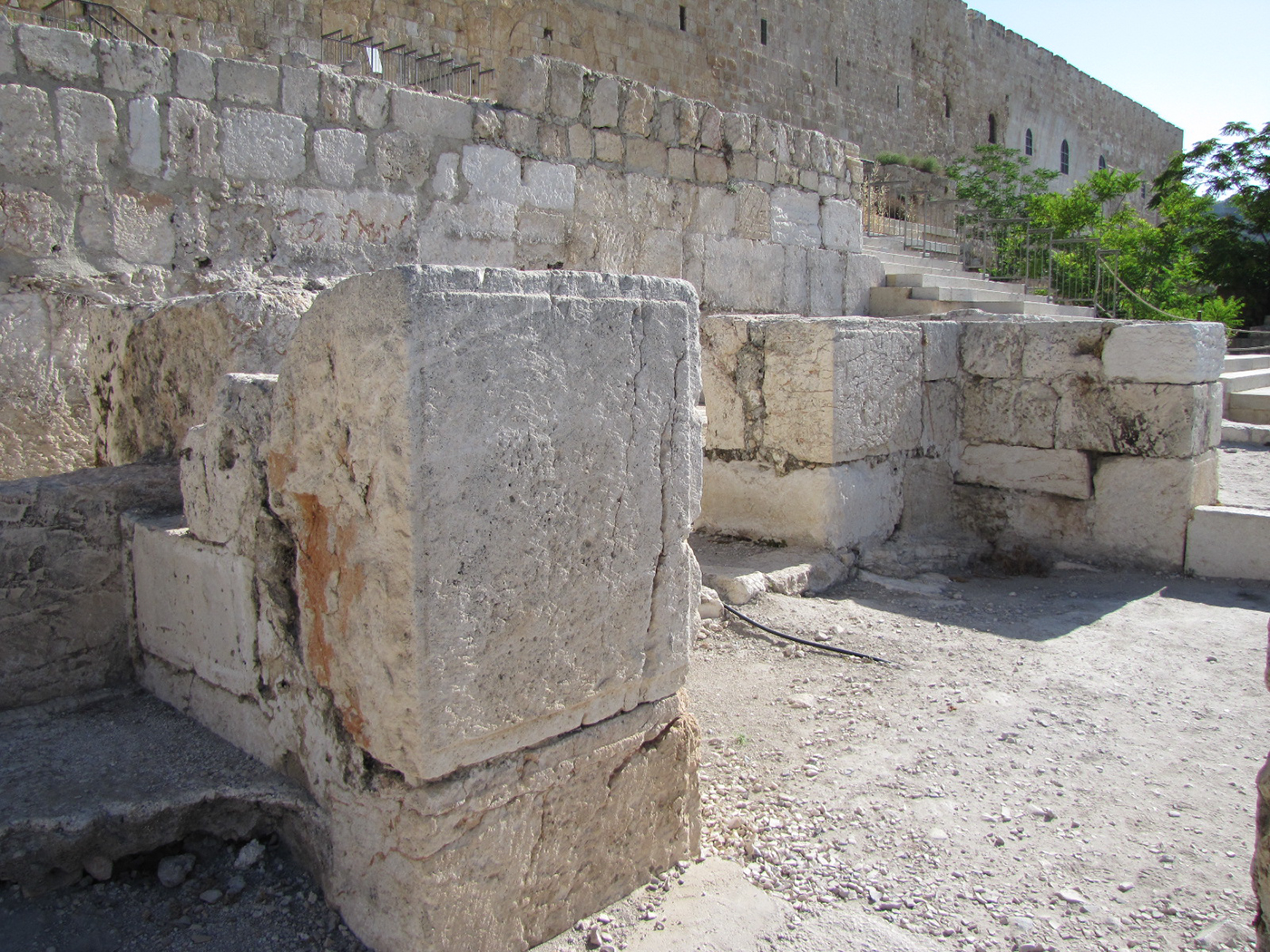
Herodian ashlars setting south of the Temple Mount.
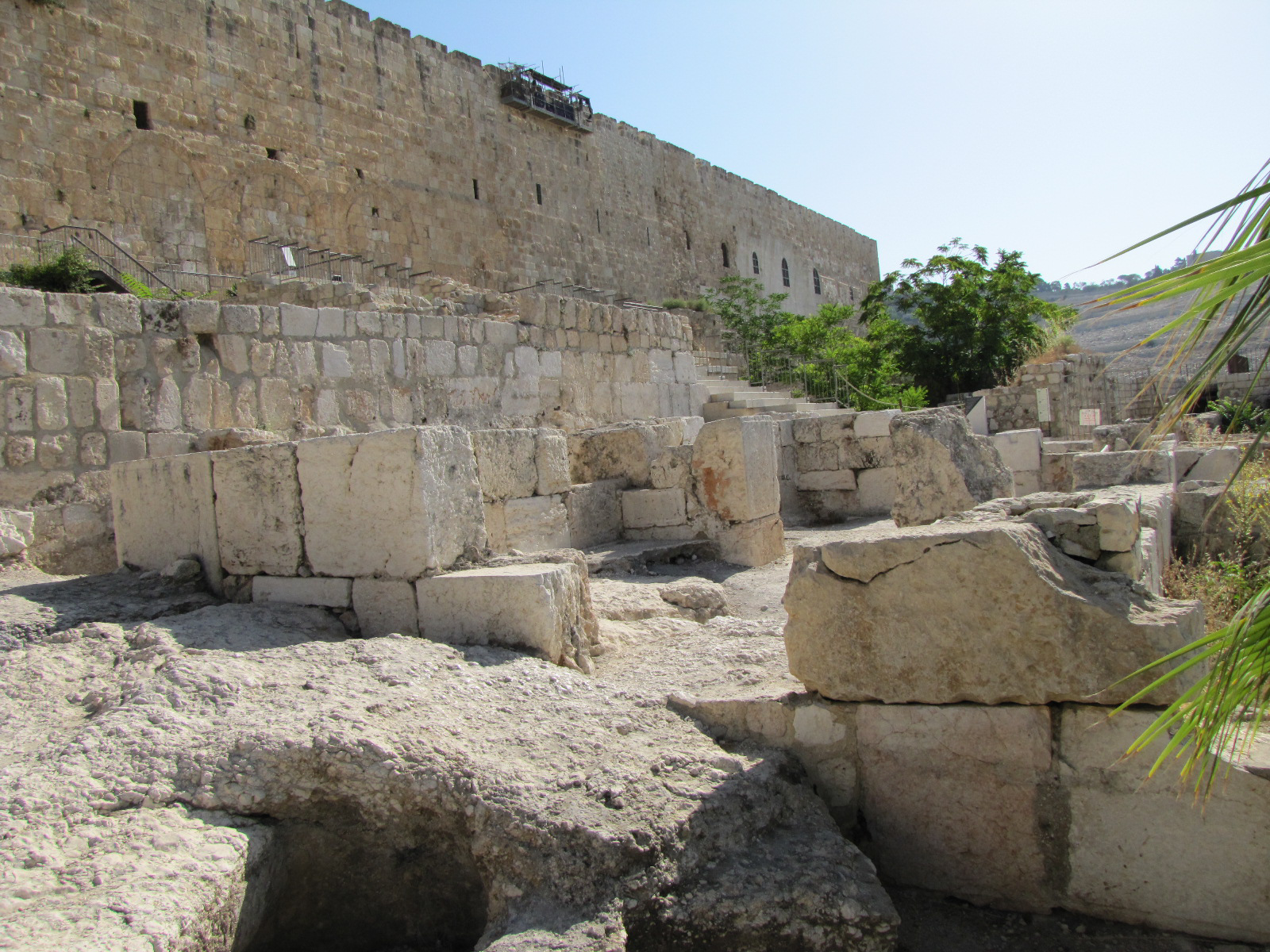
Archaeological remains setting to the south of the southern Temple Mount wall.
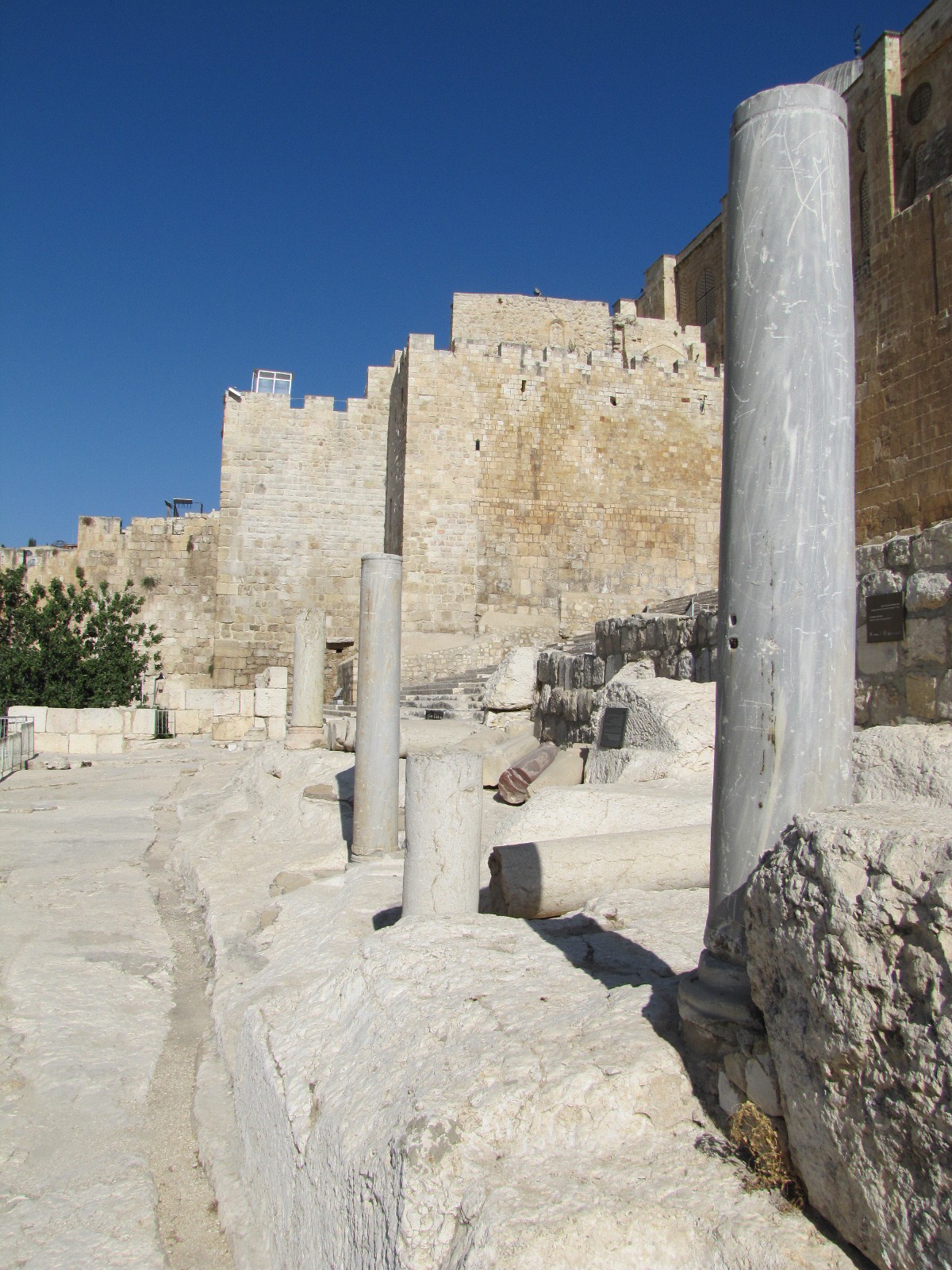
The columned courtyard of a public building in the Muslim palace complex, from around 700 AD. These pillars were taken from Byzantine Christian churches that had been destroyed.
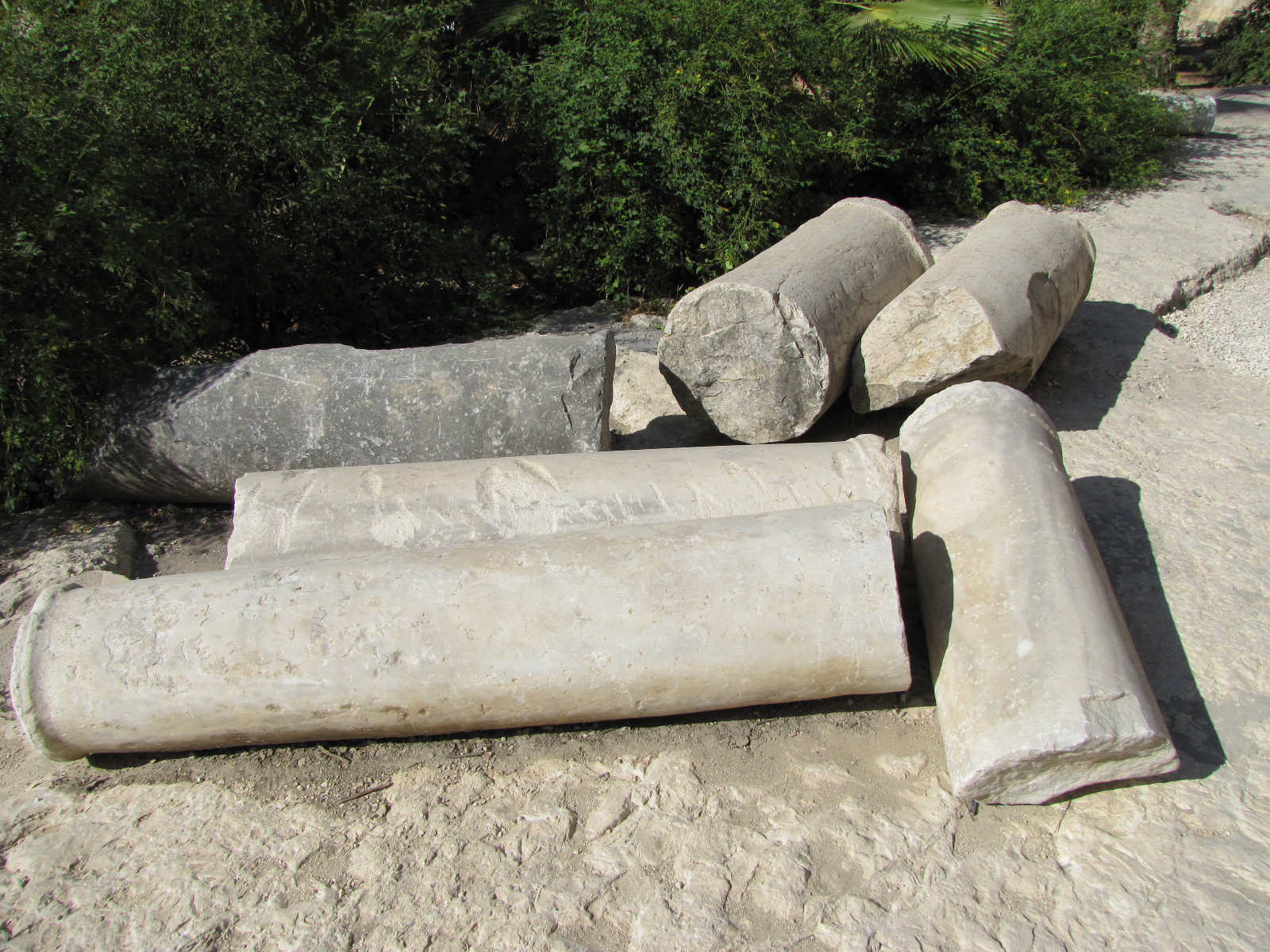
A close up of some fallen pillars.
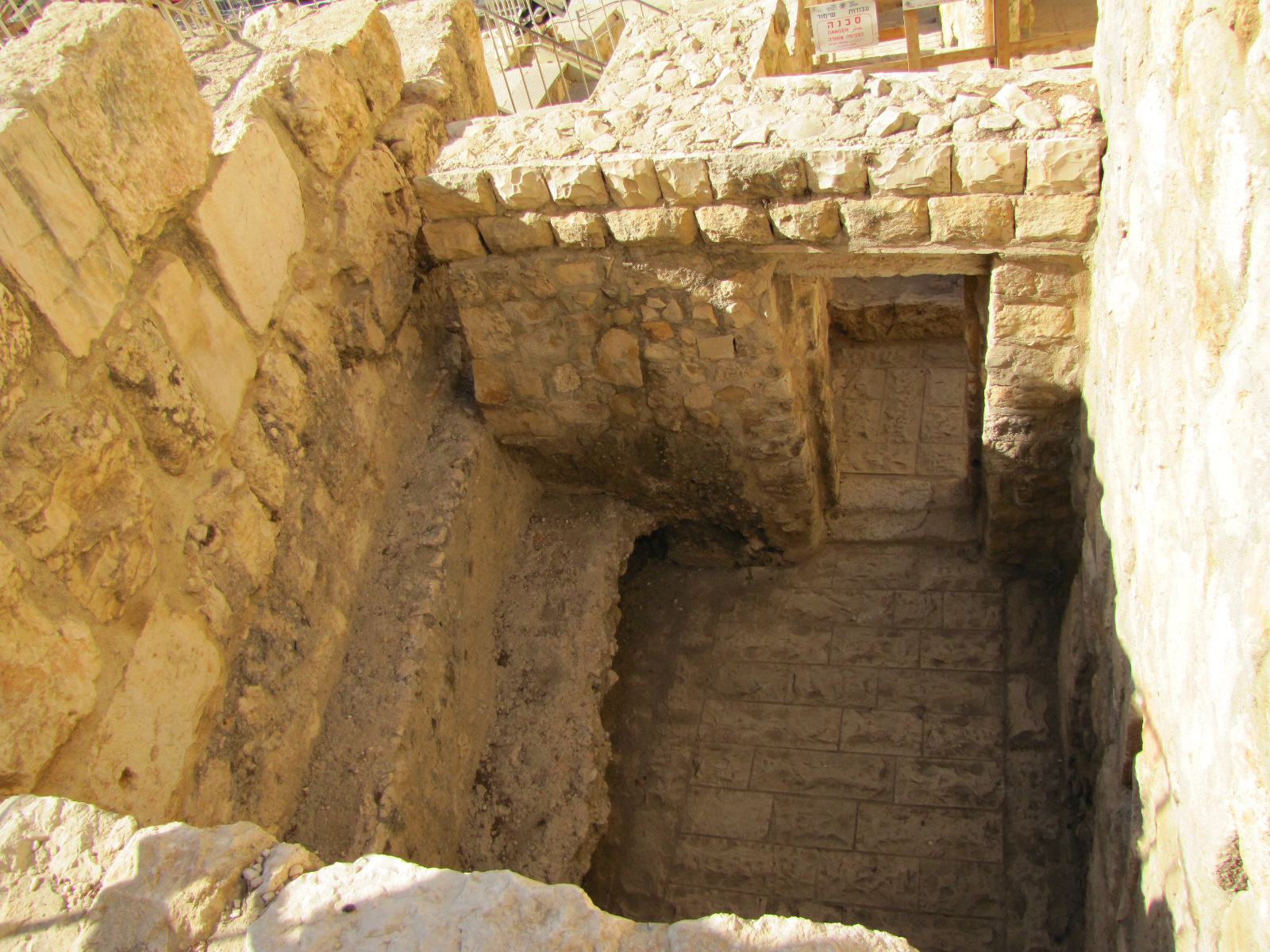
Looking down into an excavated room and doorway. Notice the original stonework on the floor.